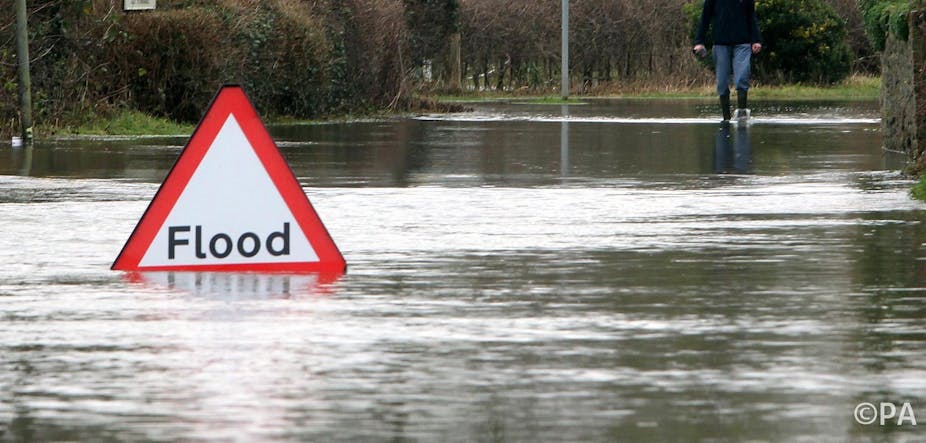The government’s long-awaited plans on how to help the insurance industry provide flood insurance to those homes and properties most at risk was presented. They are promising, but have fundamental shortcomings, according to the Centre for Climate Change Economics and Policy.
The main criticism is that the scheme does not take into account the effects of climate change. This is likely to raise the risk of flooding, increasing the number of uninsurable properties eligible for the scheme, and thereby making it financially unviable. The government’s proposed scheme is designed to cover the 2% of homes most at risk, but if this has been substantially underestimated, then the scheme may prove unworkable.
The proposed model creates a reinsurance pool called Flood Re to which insurers may cede the worst flood insurance risks. This way an insurer can retain only the risks it considers of commercial value in its own portfolio. Flood Re acts as a reinsurer that takes on only the very worst risks, removing them from the market and saving those in high-risk households the high premiums they would otherwise have to pay for flood insurance.
The scheme would be mandatory for all home insurers, and the pool would require funding – from the insurers, calculated on the basis of the cross-subsidy currently applied in relation to high risk flood insurance policies, and through a small fee added to each home insurance policy that covers flooding.
All the risk, none of the reward
The practice of ceding risks to a reinsurer is not uncommon; commercial reinsurers decide what types of risks they are willing to accept and what premium they require in return, a relationship much the same as between policy holders and insurers. But in the case of Flood Re, though the scheme will accept the worst risks, it will not be able to set a premium reflecting the risk.
This is crucial. Home insurers will try to cede as many high-risk properties as possible. If there is an increasing number of properties at high flood risk, this may put a financial strain on Flood Re. The effects of climate change will exacerbate this problem. The government in its report puts forward figures of around 250,000 UK households at significant probability of flooding. The figures from CCCEP estimate 370,000, although the long term effects of climate change are not laid out.
As the economics of the scheme are vital to its survival, this criticism is important. The consultation document refers to a “list of high flood risk properties”, but if there is a closed list of properties, eligibility for the scheme is pre-determined, and no subsequent additions can be made. This would help shore up the economics of the scheme, but the question must be asked whether it is politically feasible to restrict it so tightly. Homeowners just the wrong side of the scheme’s boundaries will find that their premiums are higher than their immediate neighbours. In addition, CCCEP’s projection is that the effects of climate change may push the real costs of damage and loss beyond first estimates.
Costs rise, but income is fixed
The government’s aim is that Flood Re should be introduced to provide protection for the most at risk properties. Over 20-25 years, premiums will be allowed to gradually rise to market level while flood prevention measures continue to be taken, to bring insurance costs down to a reasonable level. But as the CCCEP report notes, flood risk is rising, losses are increasing, and there is no detailed explanation of how the scheme will be phased out.
The difficulty arises from the need for the income of the scheme to be determined in advance. The whole point of the scheme is that it covers risks that are not insurable at current market prices. Flood Re cannot simply raise the premium to a level where it covers its expected costs. Instead the premium has been calculated in advance and is paid by an insurer levy and a charge to insurance policy holders. Without a clear definition of what properties can be ceded to the scheme, insurers will have free rein to offload all their worst risks, but the scheme’s ability to raise cash to cover costs will not rise correspondingly.
Another problem that CCCEP highlights is that a scheme like Flood Re sends the wrong message to the insurance market, homeowners and local authorities. The Statement of Principles, the agreement between the insurance industry and the government following the particularly severe floods in 2007 entails that the government continue to invest in flood defences. It is vital this continues, but by providing guaranteed reinsurance for the porperties most at risk, the sense of urgency to build flood protection measures is reduced.
Worse, CCCEP note that far from alleviating the problem, the Flood Re scheme may actually make things worse. For example, mortgage providers and developers profit from building properties on flood plains, and while an uninsurable property cannot be mortgaged, Flood Re provides low cost insurance to the otherwise uninsurable. CCCEP’s response emphasises that mortgage providers and developers should also contribute to reducing flood risks.
Essentially, Flood Re as outlined steps away from the Statement of Principles, by failing to emphasise the urgent need for flood protection measures. As the CCCEP reponse notes, “insurance alone, without complementary risk reduction efforts, is not a sustainable solution, particularly in the context of climate change”. To get it right requires an integrated approach, one that considers the incentives of all the parties involved – mortgage providers, builders, local government planning authorities and central government – and ensures they are all working toward the same goal.

